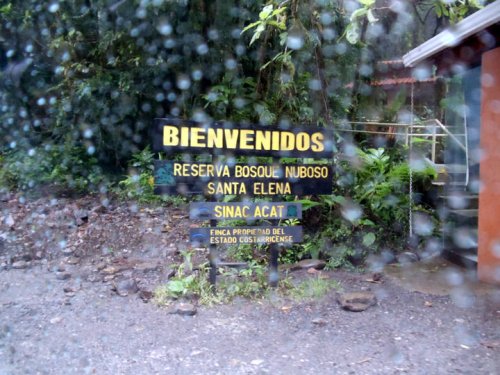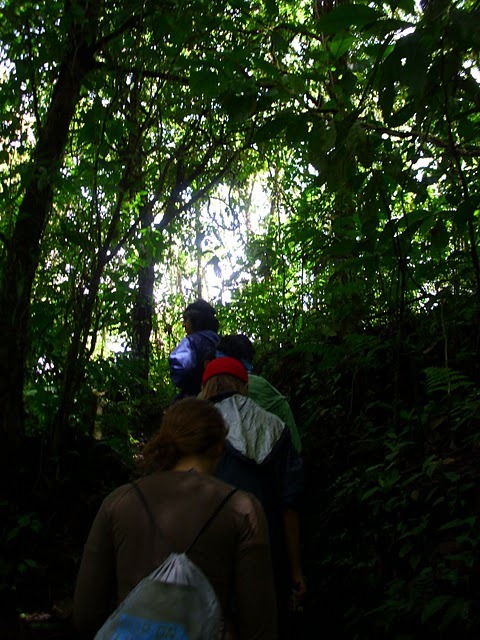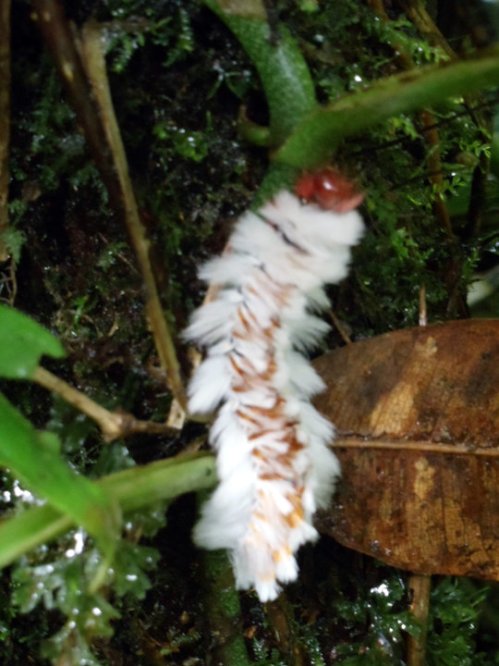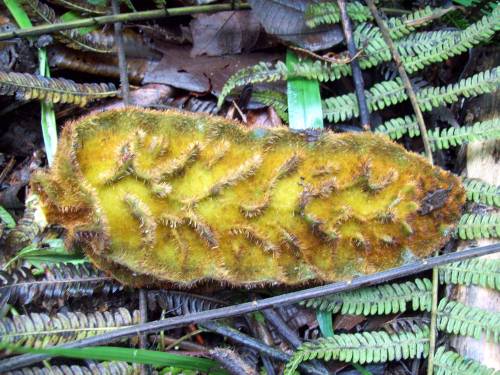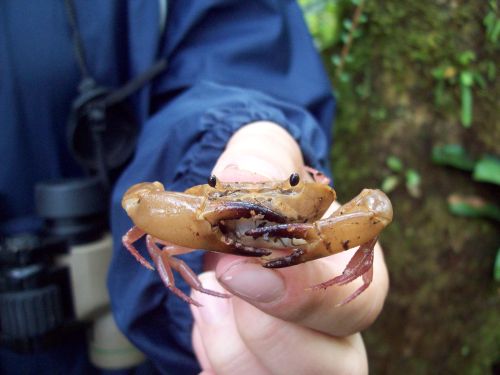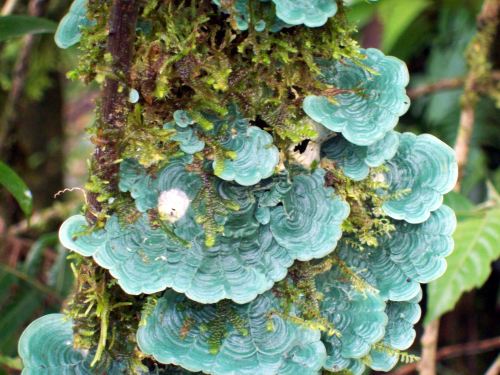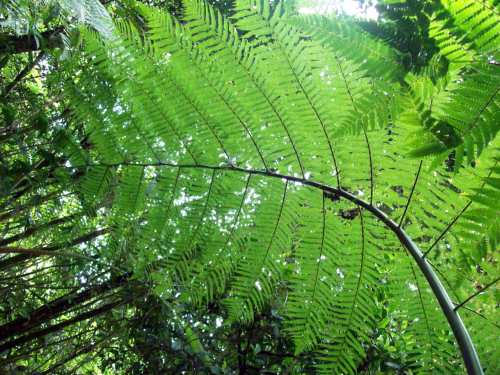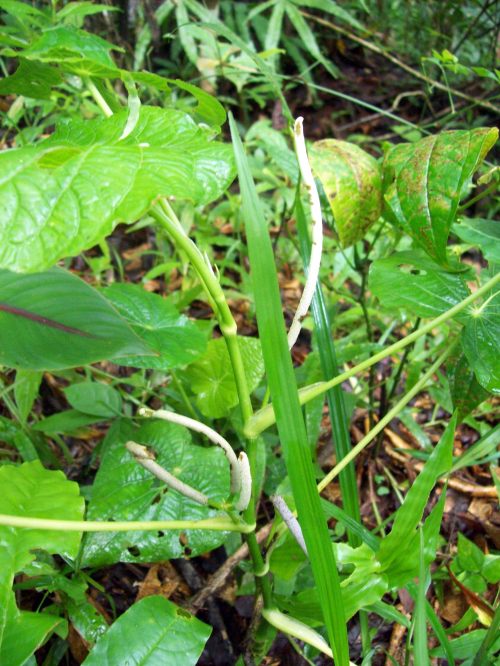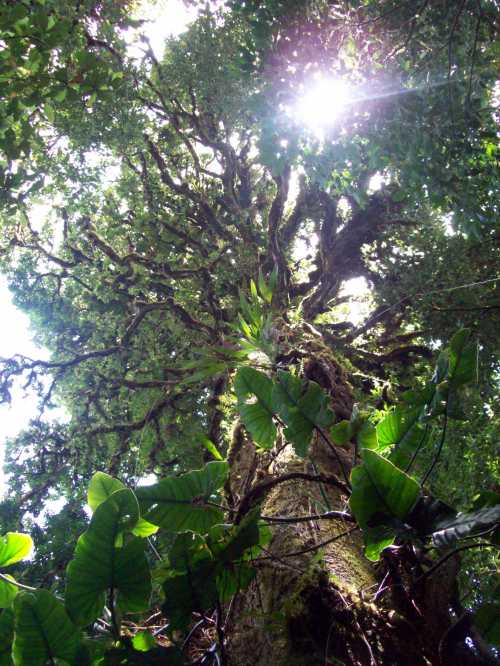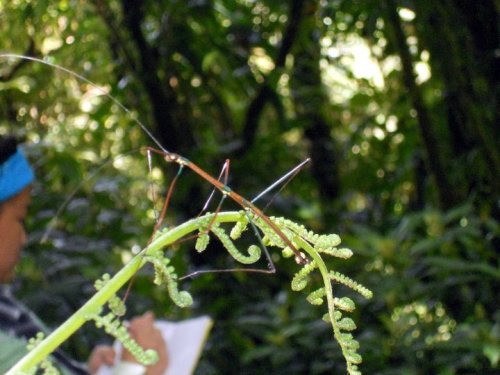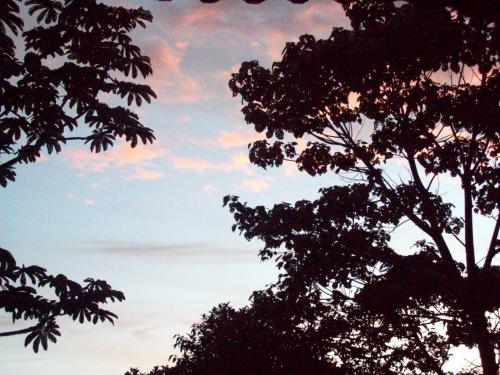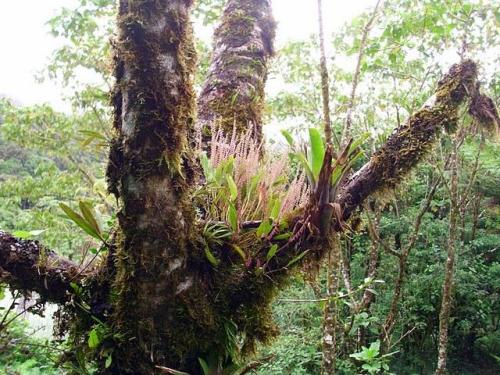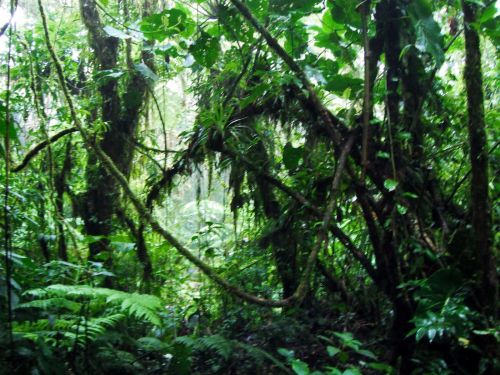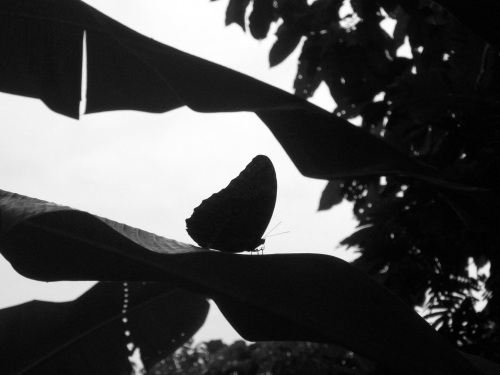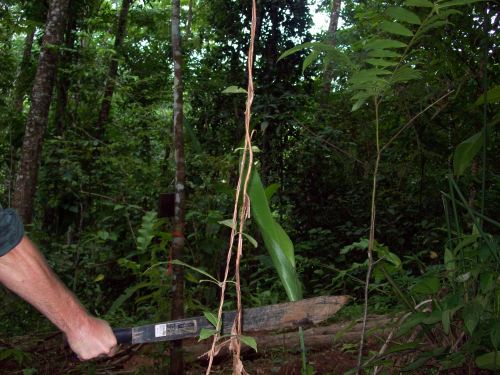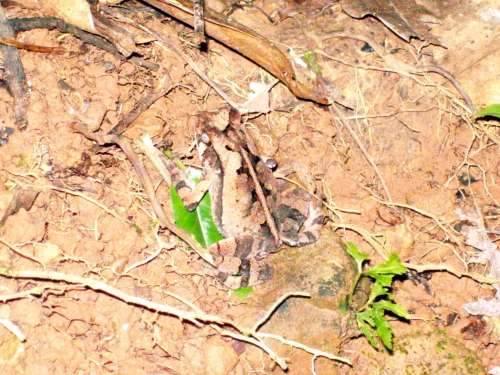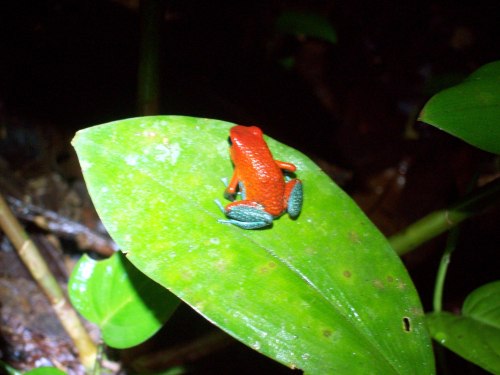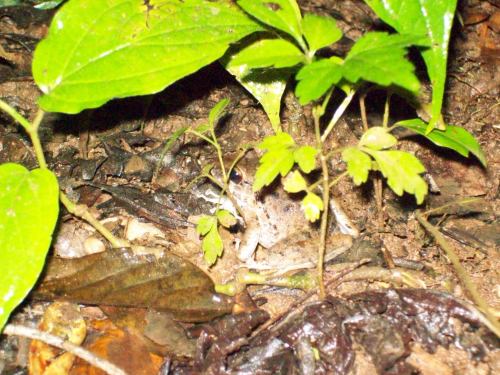I wake up early again and make eggs. I think I am getting the hand of this. Our Green Hermit and Violet Saberwing are back. Unfortunately, the weather here is erratic and what began as a pleasant morning has degenerated into a downpour. Israel meets us and tells us that although the forest would be beautiful, hiking to the Santa Elena Preserve is out of the question.
We go to the cars instead. I drive with Israel and Sarah in his blue pickup. We learn much about his family, including his wife’s battle with leukemia, epilepsy, and osteoporosis, his daughter’s education (one, coincidentally, is studying at Nichols High School in Buffalo) and his experiences in the rainforest.
All of us arrive at the Santa Elena Cloud Forest Reserve. I am initially struck by the low numbers of people here, but this could be explained by the rain. Beginning the hike, we enter 20 year old primary forest. The climate becomes wetter and wetter as we gain altitude, peaking at a ridge. Ricardo points out leaves of the begonia family, which are identifiable due to their asymmetrical leaves and toothed edges. He also shows us costas, which have spirals, as well as solenacae, which are tomato-like plants with alternating leaves and a red fruit. In front of us, a Slaty Nightengale-thrush bobs up the trail. As we are at a lower elevation than La Georgina, we encounter more diversity of trees, vascular plants, and bryophytes. We see many aerial roots, which are developed by epiphytic plants for more efficient nutrient uptake. Thanks to the moisture here, they do not dry up.
A huge gap, probably a result of high winds in January, is pointed out. Here, tree ferns, rapid colonizers, are seen in abundance. Ricardo shows us a perfoliate plant, which has its stem in the middle of the leaf. He also notes that the higher elevation makes the trees smaller and cooler temperatures make lianas and climbers uncommon.
Professor Israel, as we lovingly call him, explains that the candle-like flowers of piperaceae are a food source for bats. Also the cecropia leaves that fall here provide hiding spots for insects and other animals in the understory.
As we pass through more primary forest on the other, drier side of the ridge, Israel says that he saw a Quetzal fly by. I wish I had his eyes. A Quetzal sighting would be very rare now, as they are much more active earlier in the year when they are looking for mates. Despite that, we see a mixed flock including a Grey-breasted Wood Wren, Bush Tanager, and a Redstart. A hummingbird interested by my red coat hovers but an inch away from me. Discovering that I am not a flower, he darts away, his iridescence shining in the sun.
Exiting the park, I spot a big black bird in the undergrowth. This is a Black Guan. We eat lunch and head back to the cabin. Before dinner we talk about coevolution, the evolution of two species together as a result of pressure put on each other. This can be caused by mutualistic, parasitic, and predatory relationships. After dinner, we once again are treated to fireflies. It is nice to forget the would-haves, could-haves, should-haves of the day and simply clear the mind. I am amazed by the silent beauty of this place as we watch the sun set. The cloud forest calls to me with its sounds, in a whisper; nearly inaudibly, but it is intoxicating. The deep greens of vegetation shrouded in blue grey mist excite my eye. the smell of fresh air, clean water and dark decaying leaves fill my nose, and the sound of silence rings out deafeningly.
Jeff, Sarah, Bryan, and I go out on a night hike. We see a number of spiders and walking sticks, but nothing else.
